Panama Trip
November 16-28, 2007
![]()
Day 1, Friday November 16, 2007
Day
2, Saturday, November 17, 2007
Day
3, Sunday, November 18, 2007
Day
4, Monday, November 19, 2007
Day
5, Tuesday, November 20, 2007
Day
6, Wednesday, November 21, 2007
Day
7, Thursday, November 22, 2007
Day 8, Friday, November 23, 2007
Day
9, Saturday, November 24, 2007
Day
10, Sunday, November 25, 2007
Day
11, Monday, November 26, 2007
Day
12, Tuesday, November 27, 2007
Day
13, Wednesday, November 28, 2007
![]()
Day 8, Friday, November 23, 2007
The Canopy Tower prepared a 4:30 a.m. breakfast for us so that we could depart at 5:00 for our destination for the day, the Atlantic (Caribbean) slope of the Panama Canal near Colon, Achiote, and Fort San Lorenzo. The Atlantic slope gets more rain than the Pacific slope (the Canopy Tower is just over the Continental Divide on the Pacific slope), and when we arrived in Colon around 7 a.m. we weren't surprised that it was raining. North of Colon, we had to wait at the Gatun Locks for a large ship to pass through.

There had been so much rain that they were releasing massive amounts of water so that the canal didn't overflow!
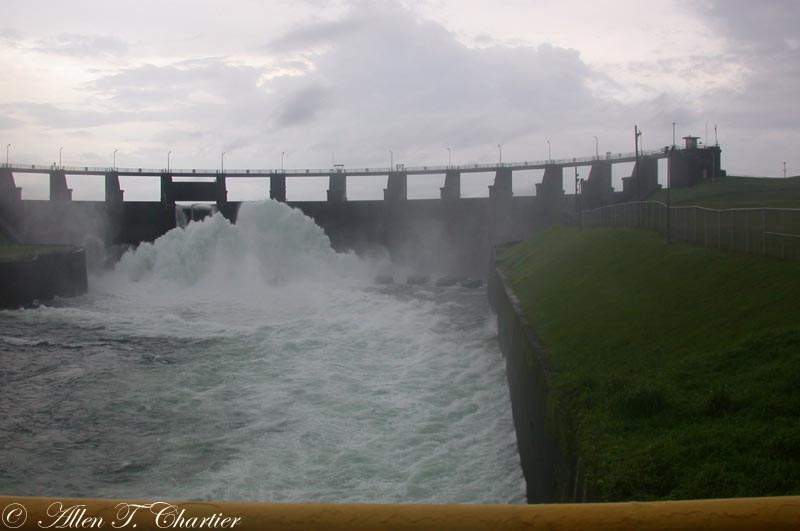
Once we crossed over to the other side of the canal, on a one-lane bridge, we saw a few Red-breasted Blackbirds in some open grassland areas. Other birds in this area included the resident Panamanian subspecies of Eastern Meadowlark, Fork-tailed Flycatchers, and even one Eastern Kingbird which is an uncommon to rare winter resident in Panama.
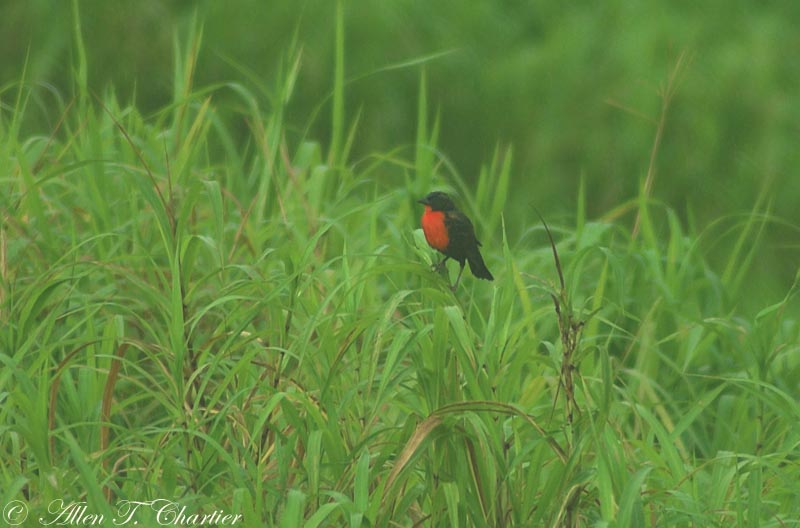
And along the roadsides, there were Yellow-headed Caracaras, including this immature.
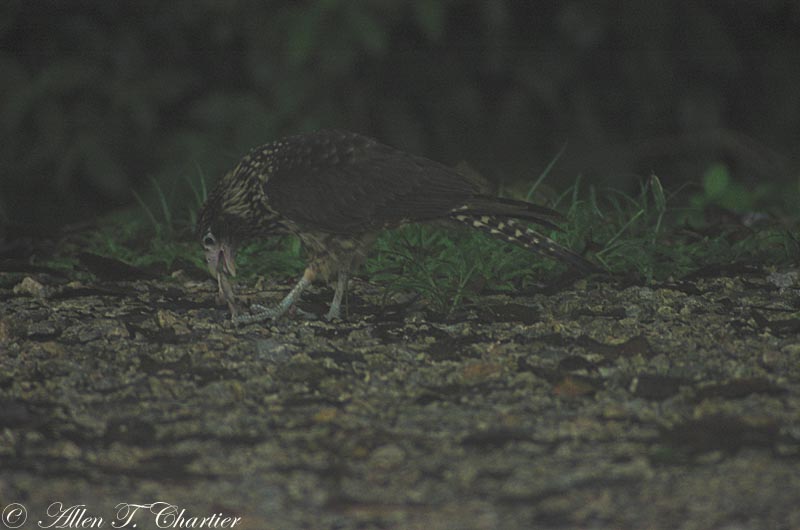
We arrived at the Achiote Road at around 7:30, and the rain was letting up some. The habitat along this road is somewhat similar to that along the Pipeline Road, but the road is paved so the forest does not close over the road. There are also intermittent human settlements, creating open areas with the result that some species were more difficult to find while others were easier as they perched in the open. We had good looks at Yellow-backed and Yellow-tailed Orioles, and one of our targets the White-headed Wren. A pair of Red-lored Parrots were scoped in a bare tree as they dried their wings.
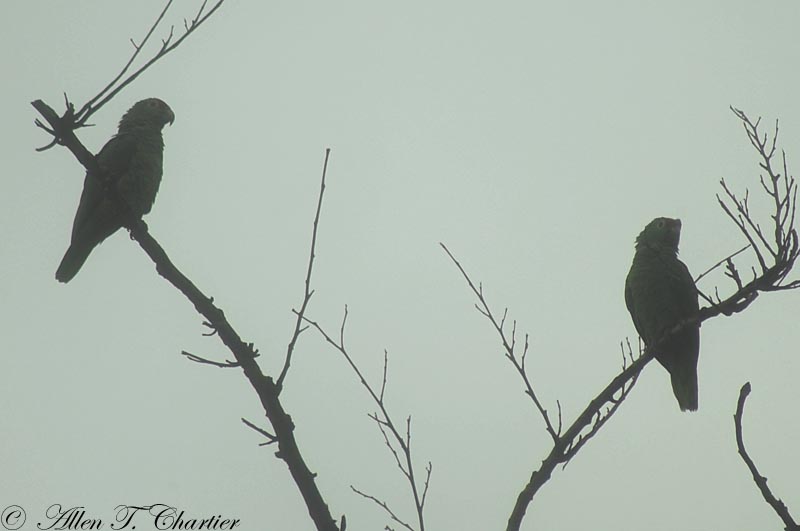
A female White-tailed Trogon sitting in the open on a wire seemed unconcerned by our approach.

Another "wire bird" was a small, and cooperative, Pied Puffbird.
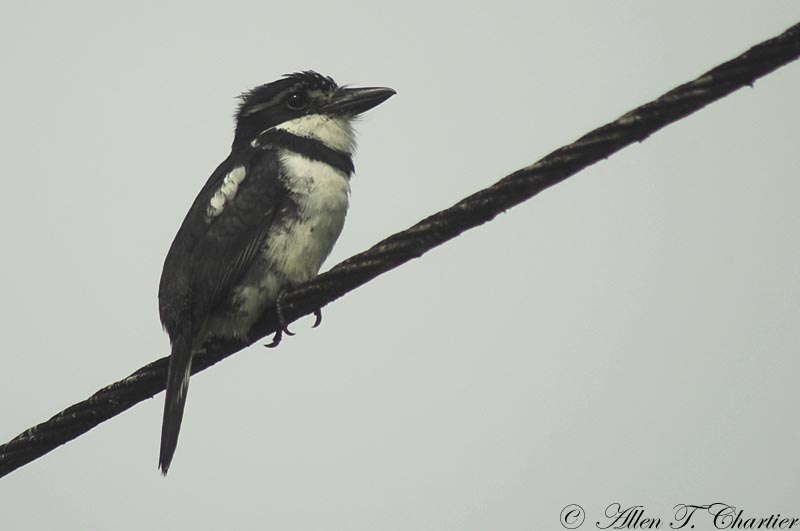
Another puffbird, the near-endemic Black-breasted Puffbird cooperated nicely, though it didn't come out onto the wires.

And a Greenish Elaenia gave us good looks at the edge of an agricultural area.
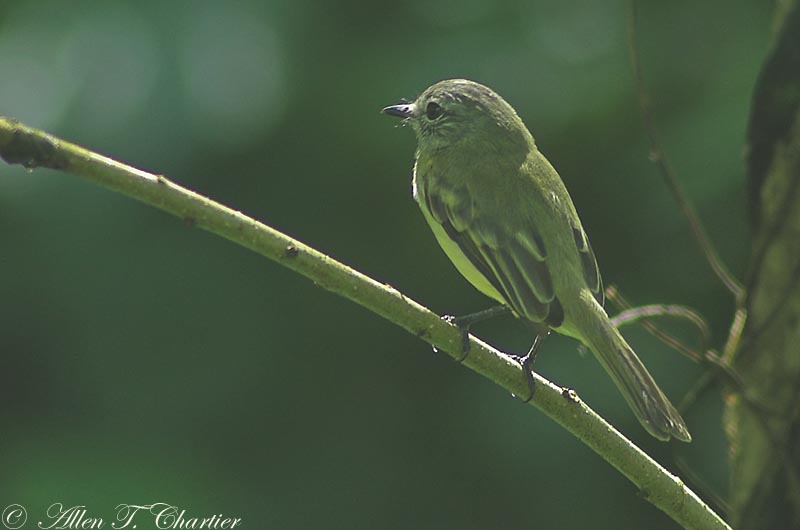
As the morning progressed, the sun came out for a while and along with it the raptors began soaring, like this distant Gray-headed Kite, one of two seen.
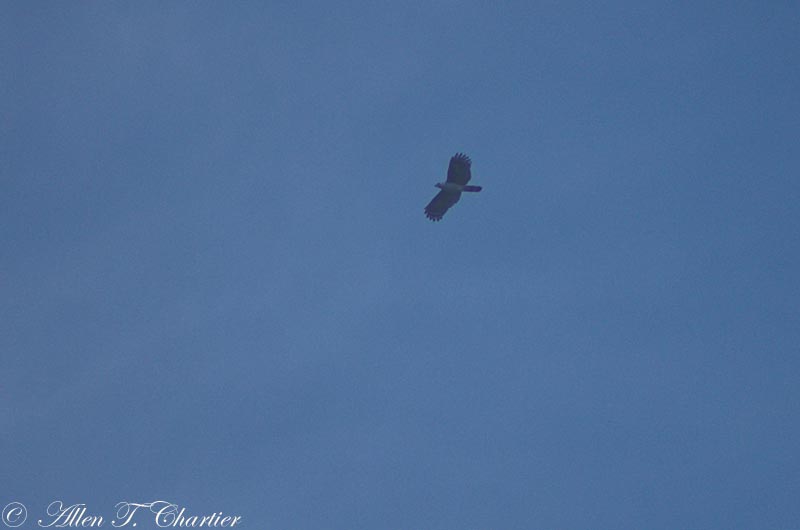
And of course butterflies became active. One of the commonest butterflies in the tropics is this Heliconius erato here feeding on Lantana, and it is sometimes given the uncreative English name of Erato Heliconian.
![]()
Near a small wetland where we heard White-throated Crakes (again!) and saw a rare Green Ibis fly in, we also saw the first orchids of the trip in a lone tree in a cow pasture. This photo was taken through the telescope, as the orchid was perhaps 30-feet up, and unfortunately the distance will probably prevent an identification.
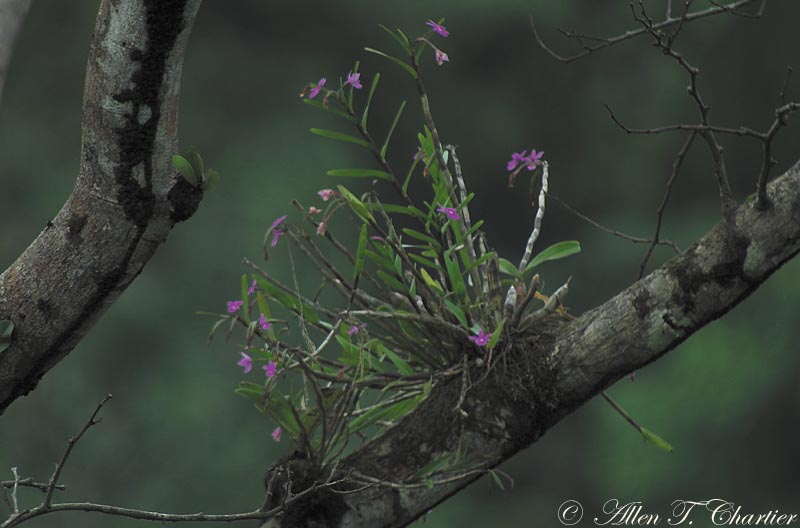
We then stopped in briefly at the visitors center and Jose paid our entry fee. Most of this area falls within the San Lorenzo National Park. From there, we backtracked to the short Trogon Trail where our target trogon was Black-tailed. We didn't find one there, but did have a very close encounter with both male and female Black-throated Trogons. Neither of these photos has been cropped!

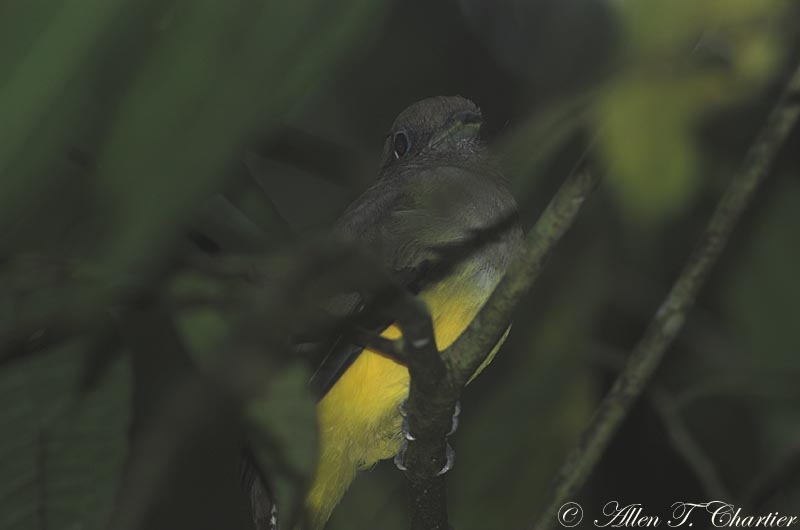
Other than these cooperative birds, the trail was rather quiet and the attention of some of us turned to other critters, on the ground. This Common South American Toad (Bufo margaritiferus) showed us yet another variation in pattern. The red warts are particularly interesting.
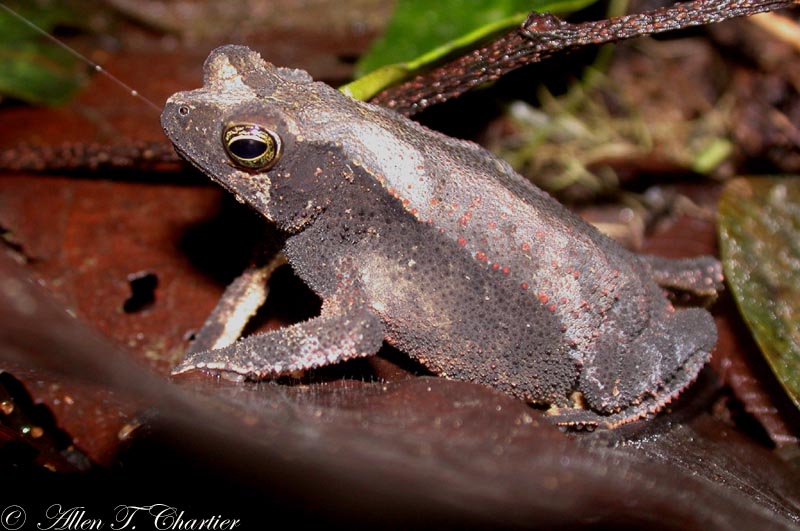
For some reason, Jeff turned over a large leaf of a Heliconia plant that was laying on the ground, and underneath found this truly spectactular spider. It is undoubtedly some species of Wolf Spider, but the span of the legs was 3-4 inches and the body was nearly 2 inches long!
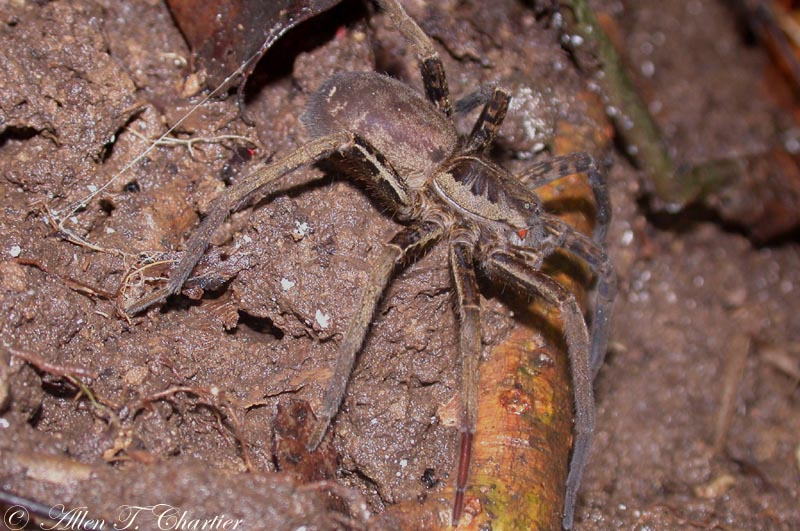
From here, we went toward Fort San Lorenzo where we had planned to eat lunch. We ended up sheltering underneath a small overhang near the contact station and eating our lunch inside the van because it had started to rain. It rained extremely hard, harder than most of us had ever seen, for more than two solid hours!
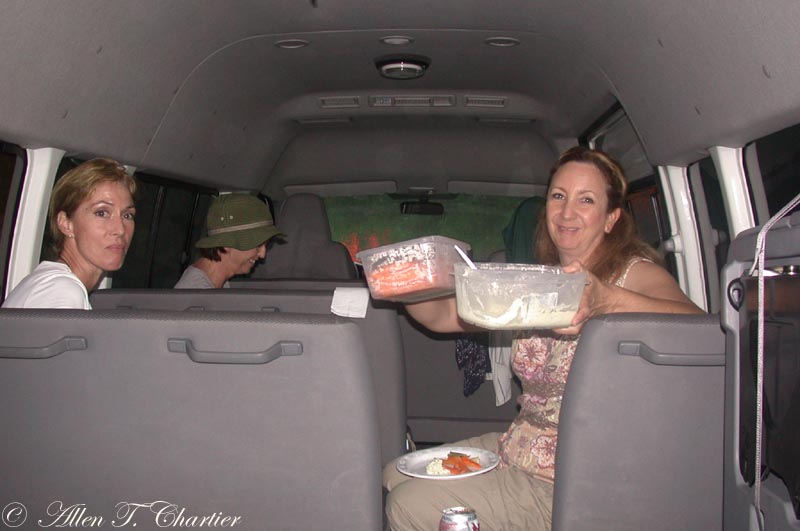
We guessed that 5-7 inches of rain fell in about two hours! It began to let up some, so we drove out to the fort itself, which was right on the coastline.
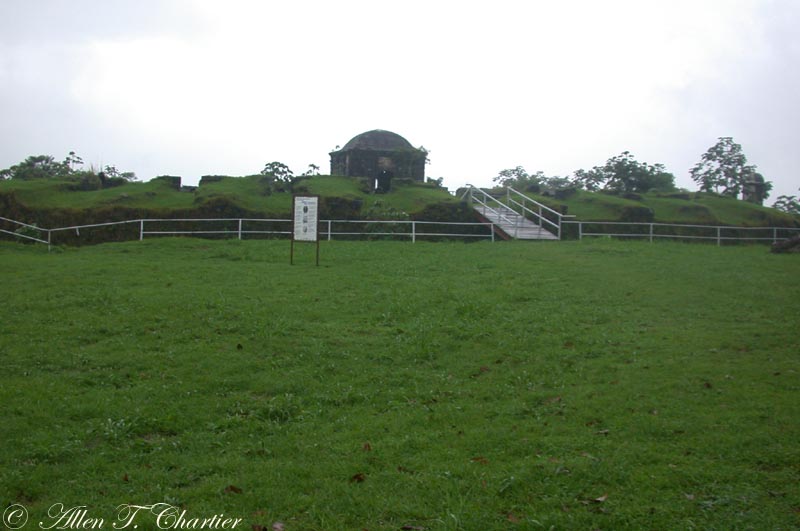
We walked the grounds a little bit in the light rain, and had brief looks at a new hummingbird for the trip, Sapphire-throated Hummingbird, and a small group of Chestnut-mandibled Toucans was seen. A brief history of the fort was summarized on a sign on the grounds.
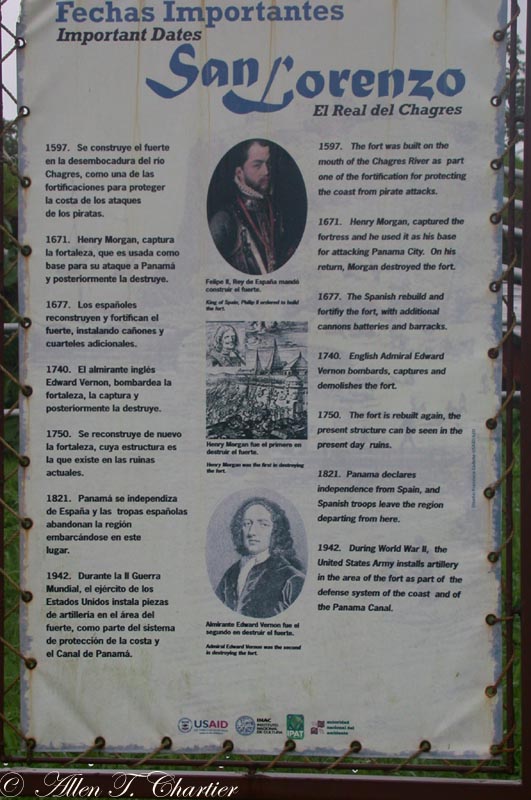
From the fort there was a commanding view of the Chagres River and the Caribbean.
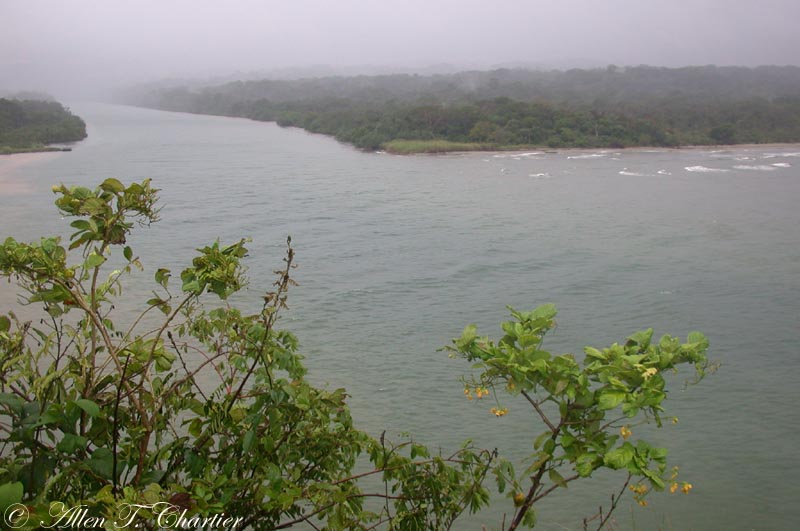
There were lots of Black Terns flying around in the river mouth, and when we drove a short distance to a dock at sea level we had better looks at them, as well as a group of Sandwich Terns and a single Royal Tern.



Along the road down to the dock, we saw an unfortunate female Indigo Bunting that seemed to be weakened, perhaps from the prolonged torrential rain. We also managed to find our target Trogon, the Black-tailed, which gave us a brief but memorable view. And perhaps the highlight of the afternoon, our driver Edgardo pointed out a Northern Tamandua (an anteater) in a tree right over our heads.
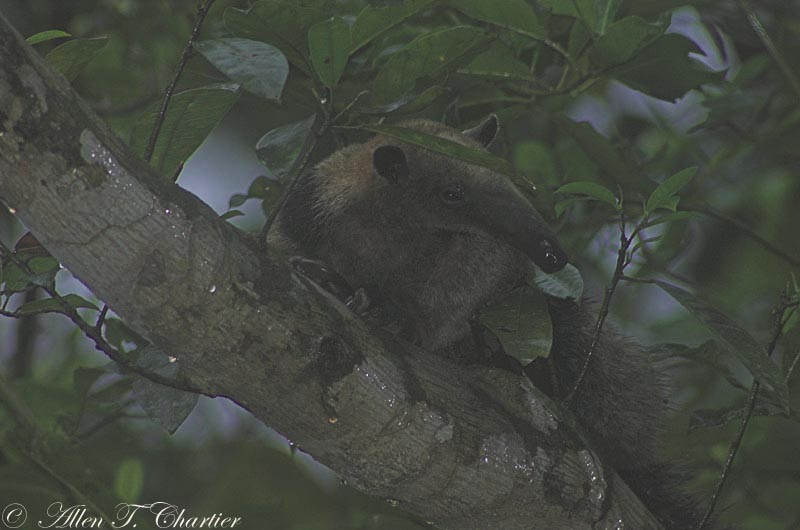
We then had to hurry back to Colon to catch the late afternoon train back to Panama City.
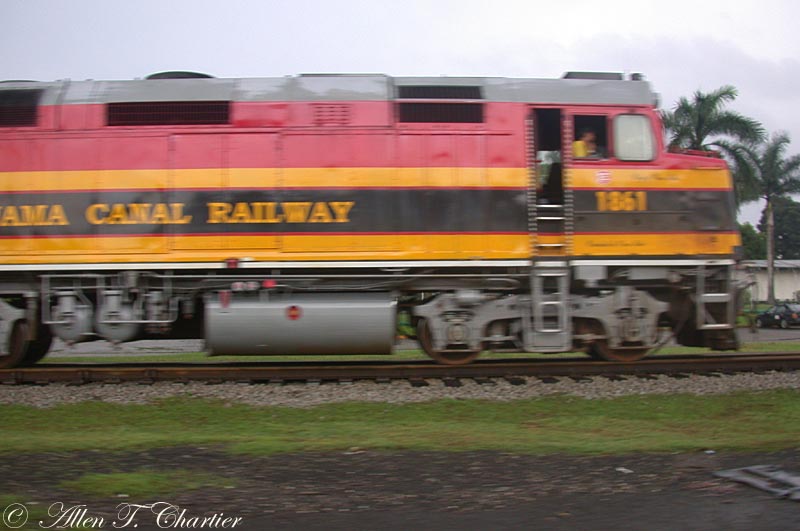
It seemed that every seat in every car was reserved for some business person traveling from Colon to Panama City, so even though we were early, we had to wait until a few minutes before departure to get seated. The cars were nice, with large windows that allowed us to get good views of parts of the Panama Canal not visible from the road. We also saw about 25 Snail Kites along the way, before the sun set about half way back to Panama City.

We got off the train and met our bus driver from the Canopy Tower, who took us back just in time for dinner. Jose and Edgardo had driven through the bad Friday afternoon traffic back to the Canopy Tower, and arrived after we did. As this was the last time we'd see Jose, we thanked him for several wonderful days of birding. Today's total of 136 species was the highest of the trip. 274 total so far.
![]()